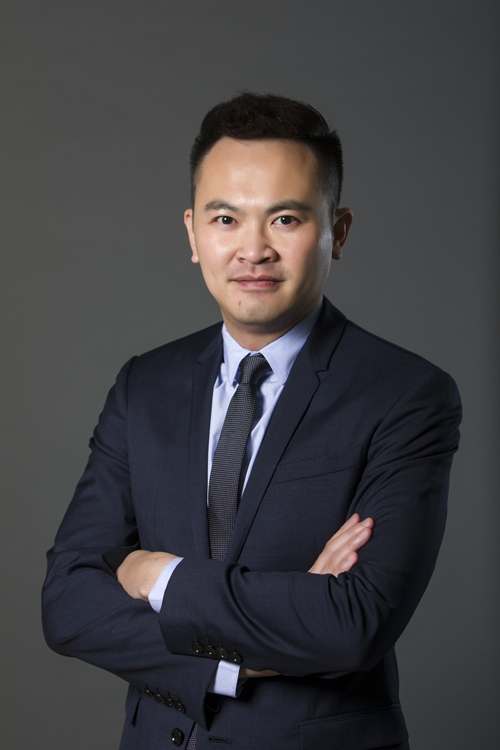Interview – Alex Chang

© Poly Auction Hong Kong
Created in 2012, the Hong Kong subsidiary of Poly Auction has forged a place alongside the American giants Sotheby’s and Christie’s. It now represents the best sales room for the most in vogue Contemporary Chinese artists like Zeng Fanzhi, Liu Ye, Mao Yan, and many others. Through this subsidiary, Poly Auction has become the leading Chinese vendor of Contemporary Art.
Alex Chang, CEO of Poly Auction in Hong Kong, shares his global vision of the Art Market and his impressions of the development of the Contemporary Art sector in Asia.
Artprice: Hong Kong stands out today as the Chinese capital of Contemporary Art generating 48% of China’s auction turnover, ahead of Beijing (37%) and Shanghai (8%). What advantages does the city have and how could the situation change?
Alex CHANG: We must begin by considering Hong Kong’s geographical location and its international position to understand why it is becoming one of China’s major Contemporary Art Market centers.
The difference between the Contemporary artworks traded in Hong Kong and those traded in mainland China essentially reflect a difference in maturity between the two Markets. In this respect, Hong Kong has an important advantage. While the Chinese Fine Art market is still in its infancy, the Western Art Market has existed for several centuries. And, Hong Kong is at the crossroads of East and West, so the city has a structure similar to that of Western markets and simultaneously benefits from the growth of the Asian market.
Hong Kong hosts lots of international Art events (including of course the Art Basel), a sign that Western galleries see the city as a bridgehead to the Chinese Market. In my view, the geographical location of Hong Kong plays a crucial role. Hong Kong’s Art Market meets Western standards while enjoying an attractive regulatory framework and superb facilities. I believe Hong Kong is an excellent international platform for the Art Market because it offers all the amenities in terms of transport and storage of artworks, but also a number of specialized services.
I think Hong Kong has become unique and unavoidable in Asia, due to its geographical location, its rules and regulations and its financial services. It offers a much more flexible legal and taxation system than mainland China. Hong Kong also offers much more favorable conditions for international collectors. In mainland China, you can’t sell old bronze statues at an auction and there are very high taxes on the import and export of artworks, which completely negates the attractiveness that the Chinese market could have for Western auction companies wishing to operate there. Hong Kong is not limited by such restrictions.
Artprice: To what extent are the Chinese market and the Western market aligned? What are the consequences for an auction house like Poly Auction?
Alex Chang: The Western Art Market is structurally more mature than the Chinese Art Market. The main difference between them stems from the fact that most Chinese artworks remain within the Asian market; there is less international demand for them. Conversely, the Western Art Market (primary and secondary) considers itself truly global.
Recent auction results show a new trend, with Asian collectors clearly developing a taste for Western works. Chinese collectors in particular are no longer focused uniquely on Asian art and are opening to other horizons. This development is being driven by education, but also by profound changes within Chinese society. China’s rapid economic development has allowed the emergence of an increasing number of collectors with a Western education. Moreover, with the ever-growing density of cultural ties around the globe, Chinese collectors have acquired a general knowledge of Art History and are able to admire a greater spectrum of artworks. This has greatly expanded their choice.
I think we are ultimately heading towards a convergence between Oriental Art and Western Art. This convergence may arise from the greater internationalization of young Contemporary artists. However, I believe that as regards traditional Chinese Art, the interest of Western collectors will continue to focus on objects and antiques, while Asian collectors will prefer Chinese calligraphy and painting.
Artprice: Does the sale of Zeng Fanzhi’s Mask Series 1996 No. 6 for $13.5 million in April 2017 illustrate the strength of Poly Auction at the global level?
Alex CHANG: Mask Series 1996 No. 6 was offered for sale by Poly Auction in Hong Kong nine years after its first public sale. This superb result was made possible by the boom of the Chinese market this past year.
Thanks to the Hong Kong market, several Chinese auction houses enjoyed greater visibility and international recognition. We have made enormous efforts to introduce Western works into Poly Auction’s Hong Kong sales and we have observed the appetite of Chinese collectors for this Art. Hong Kong’s geographical and infrastructural advantages will undoubtedly attract more Western clients who will gradually gain a better understanding of Chinese auction houses.
Lastly, collectors from northeastern and southeastern Asia, Europe and the Americas are more numerous in Hong Kong than collectors from mainland China. But the time has not yet come for these international collectors to start shopping in Beijing, Shanghai or other Chinese cities. Hong Kong has all the conditions to attract all collectors, whether from Europe, America or Asia, offering them a market which brings together all the different types of Art they appreciate and all artistic disciplines they are interested in.






 30.6
30.6
